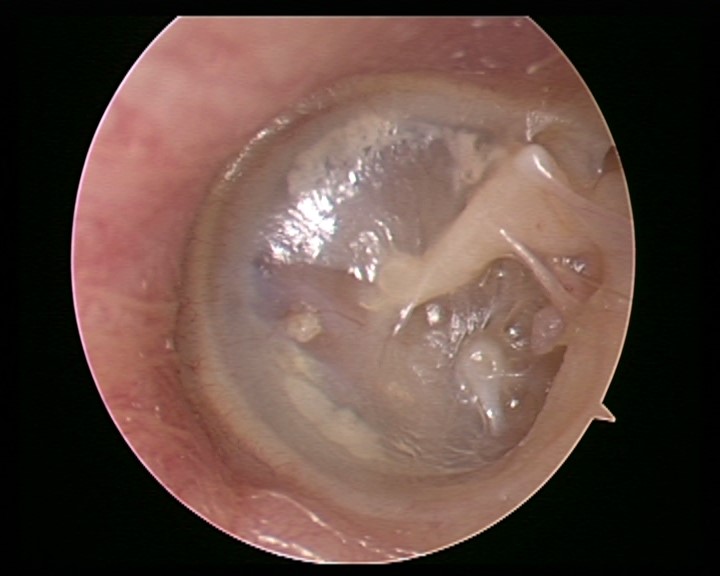Cholesteatoma
Cholesteatoma is an abnormal growth of skin in the middle ear behind the eardrum. The skin cyst can expand aggressively and cause damage to vital middle and inner ear structures. Untreated cholesteatoma can cause severe complications including facial palsy, complete hearing loss, imbalance, vertigo and intracranial complications.
The most common presenting symptoms are recurrent ear infections with malodourous discharge and hearing loss.
Diagnosis is confirmed clinically and in conjunction with CT +/- MRI scans and audiometry.
Treatment is with surgery and extended clinical follow up for potential recurrence. There are several surgical approaches which are dictated by the position and extent of disease.

Endoscopic – Transcanal
Endocopic (keyhole surgery) via the ear canal with no visible external scar. This is the least invasive and is Dr Walton’s preferred method for managing cholesteatoma. This is most commonly used for cholesteatoma in the middle ear and epitympanum (space above the middle ear)
Microscopic – Combined Approach Tympanoplasty (CAT) or Modified Radical Mastoidectomy (MRM)
Canal Wall Up surgery (combined approach tympanoplasty) preserves the integrity of the external ear canal but does involve a cut behind the ear and a mastoidectomy. This technique is performed for cases of extensive and aggressive disease involving the mastoid.
Canal Wall Down surgery (modified radical mastoidectomy) is rarely indicated but can be used in selected cases. The posterior wall of the ear canal is removed in addition to a mastoidectomy.
